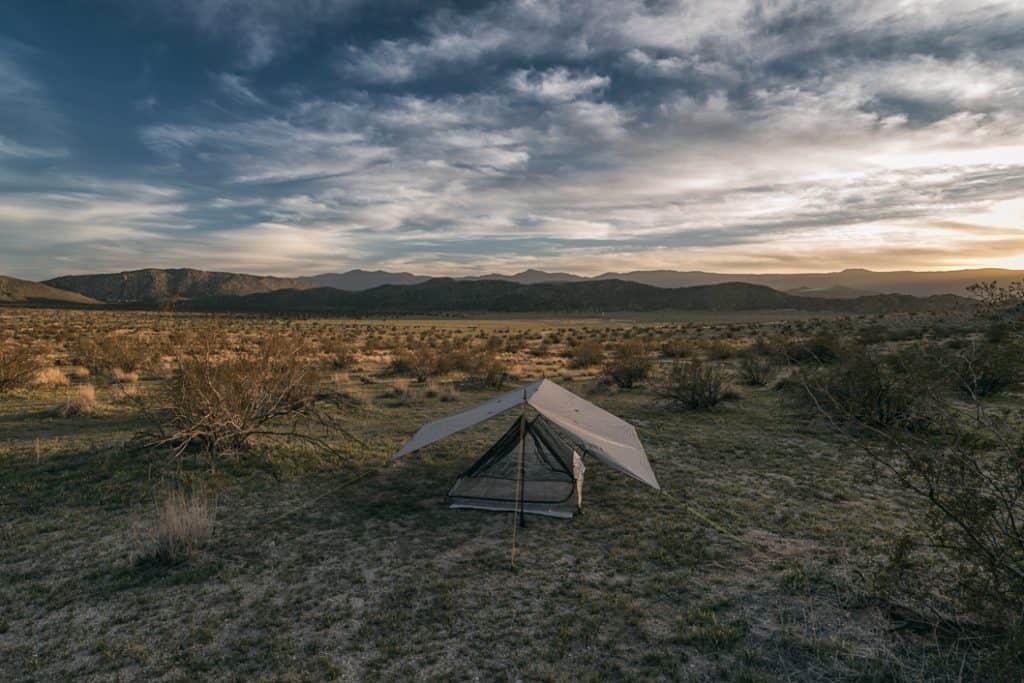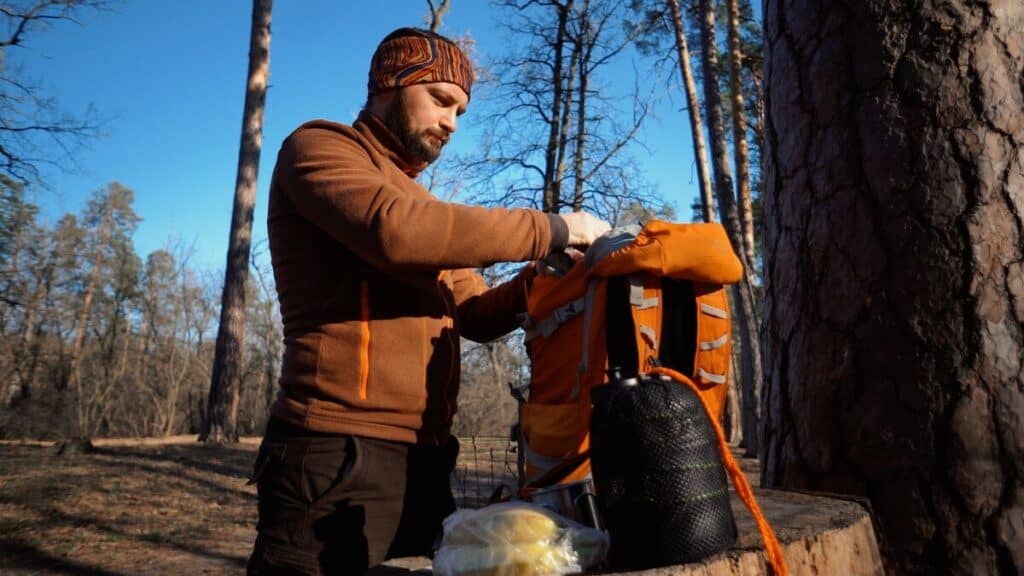
Placing a tarp over your tent has become quite common, and it serves multiple purposes. Each camping trip consists of different weather conditions, locations, and packing needs. All of these factors play a role in determining whether the effort to set up a tarp over a tent is worthwhile.
Placing a tarp over a tent has many benefits, but it mainly provides extra protection against the weather and allows for greater ventilation inside the tent. A tarp keeps the tent dryer than a rainfly and protects it from dirt, sap and other debris. A tarp also provides shade and can be used to extend the sheltered entrance of a tent.
Keep reading to learn the pros and cons of a tarp over your tent.
Should You Put a Tarp Over Your Tent?
A tarp over your tent is beneficial if the weather is likely to be too harsh for your tent to handle (or you do not have a rainfly), you want to avoid getting your tent dirty, some extra shade and ventilation is needed, or you want to use it for added insulation in the cold. Any of these scenarios can make a tarp over a tent worthwhile.
Most other times, a tarp is not needed if you have a rainfly.
Pros of Putting a Tarp Over Your Tent:

1. Protects your tent from the weather:
- The most popular reason why people place tarps over their tents is to keep them dry. A tarp is very durable and large, so it can keep your whole tent and the surrounding area dry. The added buffer between the tent and any rain or snow can provide peace of mind. If you’re camping in extremely hot or humid conditions, you can leave your windows and doors open all night to keep cool and the tarp will protect you from any rain and eliminate condensation. Although a rainfly is an option, tarps are more durable and water-resistant. A tarp can also be set up well above your tent, resulting in better air flow that keeps the tent cool and minimizes condensation. A tarp also can act as a windbreak that is not a strain on your tent structure, ultimately protecting your tent from harsh weather conditions better than your tent (and its rainfly) would on its own.
2. Keeps your tent clean:
- Along with its ability to keep a tent dry, a tarp also helps keep it clean. Depending on your camping location and climate, it can protect the tent from getting covered in dirt, mud, sap, pine needles, or a number of other outdoor substances. Rainfall can splash mud on the sides of a tent, even with a rainfly. Just like a tent footprint, a tarp is a low cost item that can prolong the life of your tent.
3. Multiple uses:
- A key benefit of a tarp is its versatility. You can cover your tent for extra protection, but you can use it for other purposes as well if needed. For example, you could use it as shelter for hammocking or create a sled or stretcher and collect drinking water in a survival scenario. A tarp can also be used to shelter a dining area. Some people camp using a tarp alone. A tarp has countless applications in a camping environment.
4. Can provide more shade:
- Camping with a tarp will block the sun from shining directly on your tent and will provide more shade while you’re sleeping or inside of it. The extra shade can be really nice if it’s summertime, and especially if you aren’t able to set up your tent in an area away from the sun. This can also help prevent light from shining through the tent from the inside. If you are in there at night and have your flashlight on, the tarp will block most of that light so you’re not as visible.
5. Extended doorway section:
- When placing your tarp over your tent, you can extend the doorway section to be covered by the tarp. Having a couple of extra feet of tarp covering the doorways to your tent is great for keeping items cleaner, and dryer, and adding extra shade. You can place shoes or clothes under this tarp-roof while it’s raining so they don’t get wet, while still being able to leave them outside. If it’s raining or snowing, there’s also the option to create a fire underneath the tarp-covered section, which will keep the wood dry. That is, if the tent is tall enough, and it won’t catch fire.
6. Creates more Insulation:
- The tarp can help some retain heat inside the tent, but its main benefit in the cold is to block wind. A tarp can also be used behind a sleeping area to reflect some heat from a campfire. Be careful of generating condensation and frost if you decide to wrap your tent in a tarp. A warmer sleep system is more important than anything around it.
Cons Of Putting A Tarp Over Your Tent:

1. It’s more to pack:
- Tarps are typically a lot lighter than tents, but a tarp can take up a lot of room in your bag or car. Often the added bulk is a worse problem than the added weight.
2. Might be useless depending on the weather:
- The utility of the tarp often depends on the weather you happen to get. For example, if weather is ideal, you may not even use it. Why take extra time setting one up and taking one down if there is no benefit? It’s important to track the weather for your trip so you can gauge if you will need it or not before you decide to bring one.
3. Can be unsightly and take up campsite space:
- Tarps are often large, which not only takes up space in your backpack but at your campsite. For a smaller campsite, hanging a large tarp over it can limit the usable space around your tent for certain activities. For example, it’s definitely not a good idea to start a fire under a tent. Also, those tarp guylines extending across your campsite can pose some unpleasant challenges during a late night bathroom break. Kids often trip on any lower guylines, regardless of time of day.
- Large tarps also create a large, high-profile construction that can distract from or obstruct views of the natural environment.
4. Can cause or increase condensation:
- If your tarp is placed too close to the rainfly or tent body, it can increase condensation. Overnight as we breathe, the water drops that would otherwise go through the vents at the top of the tent accumulate and drip back onto you.
5. Can cause tent damage from abrasion:
- Another con of placing the tarp too close is that it rubs against the outer layer of the tent. When this happens, it reduces the tent’s lifetime and deteriorates the polyurethane coating layer over time.
6. Campsite may not have trees to tie it to:
- Tarps are often tied off to trees. Your designated or otherwise ideal campsite may not have trees in a convenient location.
